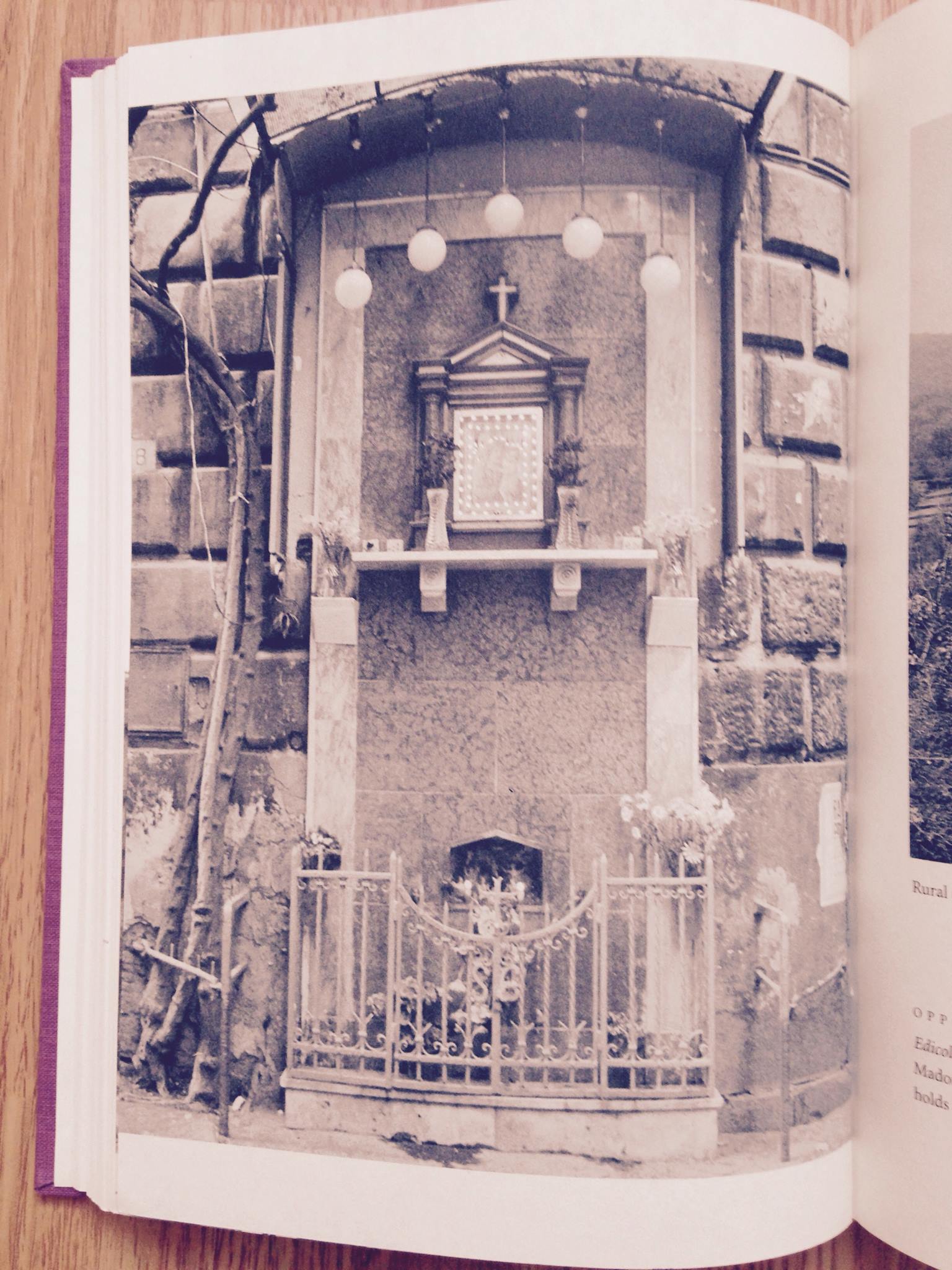“These purgatories, which meet the eye more or less upon the walls in every part of Italy, abound to a singular degree in the kingdom of Naples, where the neighboring volcanos appear to have furnished the imagination of the artist with more than common horrors.” (pp. 45-46)
“A profusion of tapers was thought particularly acceptable to [Ceres]. ‘Then light the unctuous torch; should incense fail, with Ceres chaste not costly gifts prevail.’ (Fast. iv. 411) But it was further usual to dedicate to her candles or torches of that enormous size which I have said are now offered to St. Agatha; emblematical, no doubt, of the pines which she is reputed to have plucked up and lighted at Aetna whens he traversed Sicily in search of her daughter Proserpine.” (pp. 63-64)
“...the dress of the persons officiating the procession of the saint... was made expressly for the occasion, and was invariably white. In all heathen rites that colour was thought to have a favourable influence upon the gods, and the prayer of a suppliant so lcothed was held to have a more common claim upon the bounty of Heaven. In the worship of Ceres, however, no other colour was even permitted…” (p. 71)
“Again, the custom of kissing objects of religious reverence, so universally prevailing in Italy and Sicily, seems to have been a mark of affection formerly bestowed on the images of the heathen gods with equal profusion.” (pp. 75-76)
“Finally, it may be remarked, that as the greater and less Eleusinia were celebrated in the same year, at an interval of six months, so are there now two annual festivals to S. Agatha, the one in February, the other in August. ...The festival of S. Rosolia [sic], the patron saint of Palermo, exhibits a similar spectacle; and I doubt not that both the one and the other derive their origin from a common source--the honours paid to pagan deities, but especially to Ceres, whose worship radiating from Enna, the centre of Sicily, and the throne of her glory, extended to the most remote and inaccessible shores of the island.” (pp. 82-83)
“Thus the temple of Vesta is now the church of the Madonna of the Sun; fire being the prevailing idea in both appellations. That of Romulus and Remus is now Cosmo and Damien, not only brothers, but twin brothers. The site of the old Templum Salutis is supposed to be occupied by the church of S. Vitale, if not an imaginary saint, at least one whose name was selected as doing little violence to that of Salus. In the church of S. Maria Maggiore, the cradle or manger in which our Savior was laid is amongst the relics; a peculiarity very probably derived from that building having succeeded the temple of Juno Lucina.” (pp. 91-92)
“I will add, that the necklaces, rings, and pendants for the ears, with which the [pagan gods] were bedecked, are now lavished on the [saints] with equal profusion. Indeed, the excess of rings seems, if possible, to be greater than in the days of Pliny…” (p. 105)
“...the practice of drawing curtains before these figures, to create in the people a mysterious awe, had its commencement in Pagan times. Thus we read in the 2d Book of Kings (ch. Xxiii. 7.) “of the women who wove hangings for the groves,” which is explained by some of the commentators, with apparen reason, to mean ‘curtains spread before the idol of the grove for the purpose of procuring it respect’… (pp. 105-106)
“There is every reason to suppose that the Egyptian temples did not greatly differ in the style of their furniture from those of Italy; the latter country having derived a great part of her mythology, and many of her religious rites, from the people of the Nile.” (pp. 107-108)
“The sounding brass, in some shape or other, was struck in the sacred rites of Dea Syria; and in those of Hecate. ‘It was thought,’ says the scholiast on Theocritus, ‘to be good for all kinds of expiation and purification.’ It had, moreover, some secret influence over the spirits of the departed. …[bells] were instruments well known to the ancients, and employed by them… for many superstitious purposes.” (pp. 115-116)
“Again, the familiarity with which the Romans treated the effigies of their gods is not less remarkable with respect to those of our Savior and the saints, in the present Italians and Sicilians. I have seen them expostulate with an image in a church in a half whisper, with as much emphasis and expression as if an answer had been forthwith expected to have issued from its lips.” (pp. 123-124)
“When disappointed by his tutelary saints, an Italian or Sicilian will sometimes proceed so far, as to heap reproaches, curses, and even blows, on the wax, wood, or stone, which represents them.” (p. 125)

